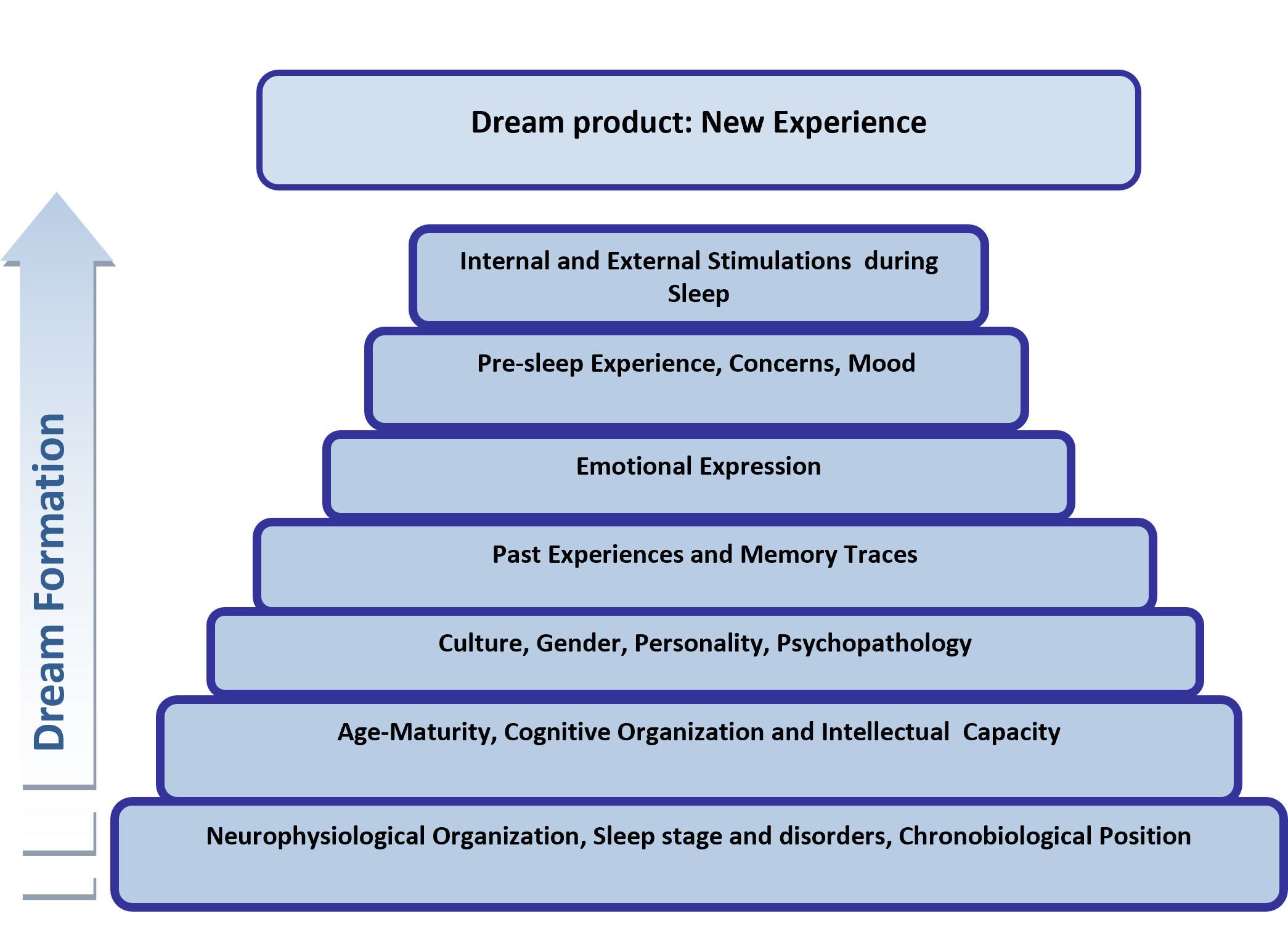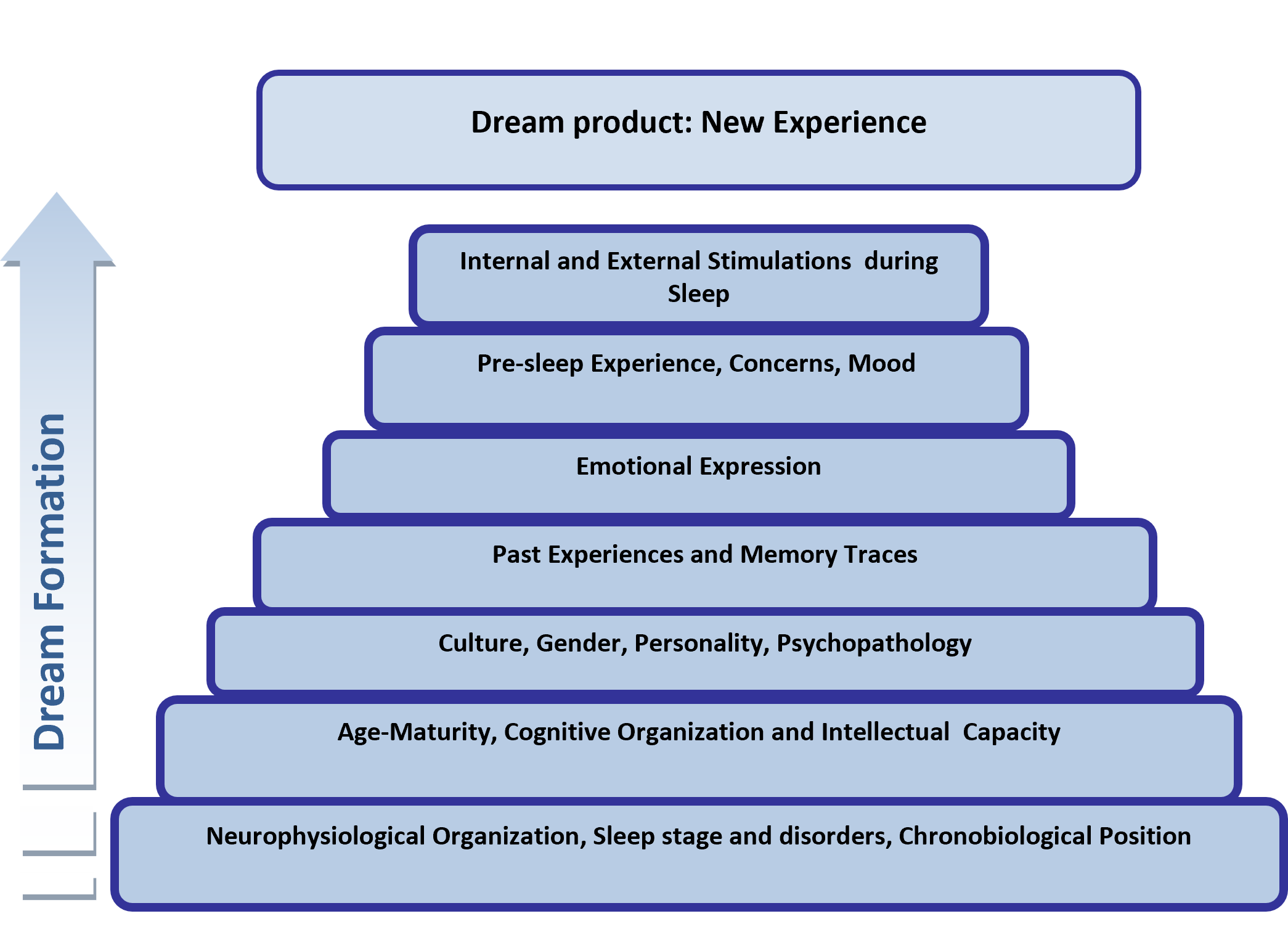Topic 6: Sleep and Dreams
1/24
There's no tags or description
Looks like no tags are added yet.
Name | Mastery | Learn | Test | Matching | Spaced |
|---|
No study sessions yet.
25 Terms
Hypnagogic reverie
A dreamlike state of imagery or thoughts (daydreaming) that occur while falling asleep; sleep onset mentation (N1 and N2), typically characterized by simple or elaborate imagery.
Hypnopompic reverie
A dreamlike state of imagery or thoughts (daydreaming) that occur while awakening spontaneously, typically in the morning. It can also be characterized by elaborate imagery
“Reflections/thinking”
Thoughts mainly observed in stages N2, N3; the dreamer reports thoughts with no hallucinatory content
Vivid dreams
Classic dreams characterized by vivid imagery and elaborate sequences, and typically involve characters, interactions, and emotions. Occur mainly in REM sleep.
Lucid dreams
The dreamer is conscious of dreaming but remains asleep (in its purest form, the dreamer controls the scenario). Occur mainly in REM sleep but also in stage N2.
Recurrent dreams
Dreams in which the dream content is always identical (distinct from repetitive dream themes). Often have negative content and arise during periods of stress
Bad dreams
Story-like dreams with frightening or negative emotions and recalled in the next morning; typically seen during REM sleep
Night terrors
Brief episodes of panic, sometimes accompanied by mental activity. Occur in stage N3 (especially at the beginning of the night).
“Startle” awakening
Wake up completely and abruptly; dysphoric emotions may persist into wakefulness
Past-recurrent dreamers
According to Zadra, this group has the highest level of psychological well-being in their wake life due to resolved conflict related to the recurrent dream
Dreaming
Sensory imagery with development and progression of the mental activity
Thinking
Isolated/fragmentary thought without elaboration
Memory traces
Things that were activated that day. Whenever you activate a thought, it pings the surrounding ones.

Emotional expression
What you’re feeling right before you go to bed is going to affect your dreams

Freudian hypothesis
Dreams are a guardian of sleep and a road to the unconscious
Continuity theory
States that dreams reflect waking day experience. Dreams reflect the daily concerns and ideas of the dreamers rather than hidden wishes or emotional conflicts
Compensatory theory
Dreams as outlet for emotions and thoughts that cannot be expressed during the day or that are repressed
Threat stimulation theory
Dreams are a way to practice survival skills/reflexes when we were animals and they are no longer needed but they are still there
Therapist-guided dream therapy
When the dreamer works with a therapist to deal with waking day issues associated with dream imagery
Self-guided mode
Dreamers work through the dream and gain insight and discovery themselves, without the help of a therapist
Storytelling Method
This method was designed in order to get people started on dream interpretation with a systematic method that’s easy to use, not time-consuming, provides discovery easily and quickly, and would be safe for dreamers to use while leading them to important discoveries
2A method
Dreams are driven by the emotions as well as the personality of the dreamer; this method focuses on accessing the emotional content of dreams in order to discover the meaning of the dream images
Meditative dream re-entry
This method can be used to shift emotions or mood. Very useful for shifting negative or fearful emotions to positive ones, after an upsetting dream
Nightmares
Lengthy, elaborate, vivid, story-like dreams with intense negative emotions that wake the dreamer up
Psychotherapy
Remains the most likely to consider dreams among all the types of therapies